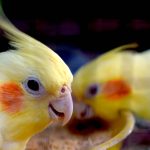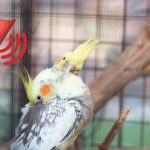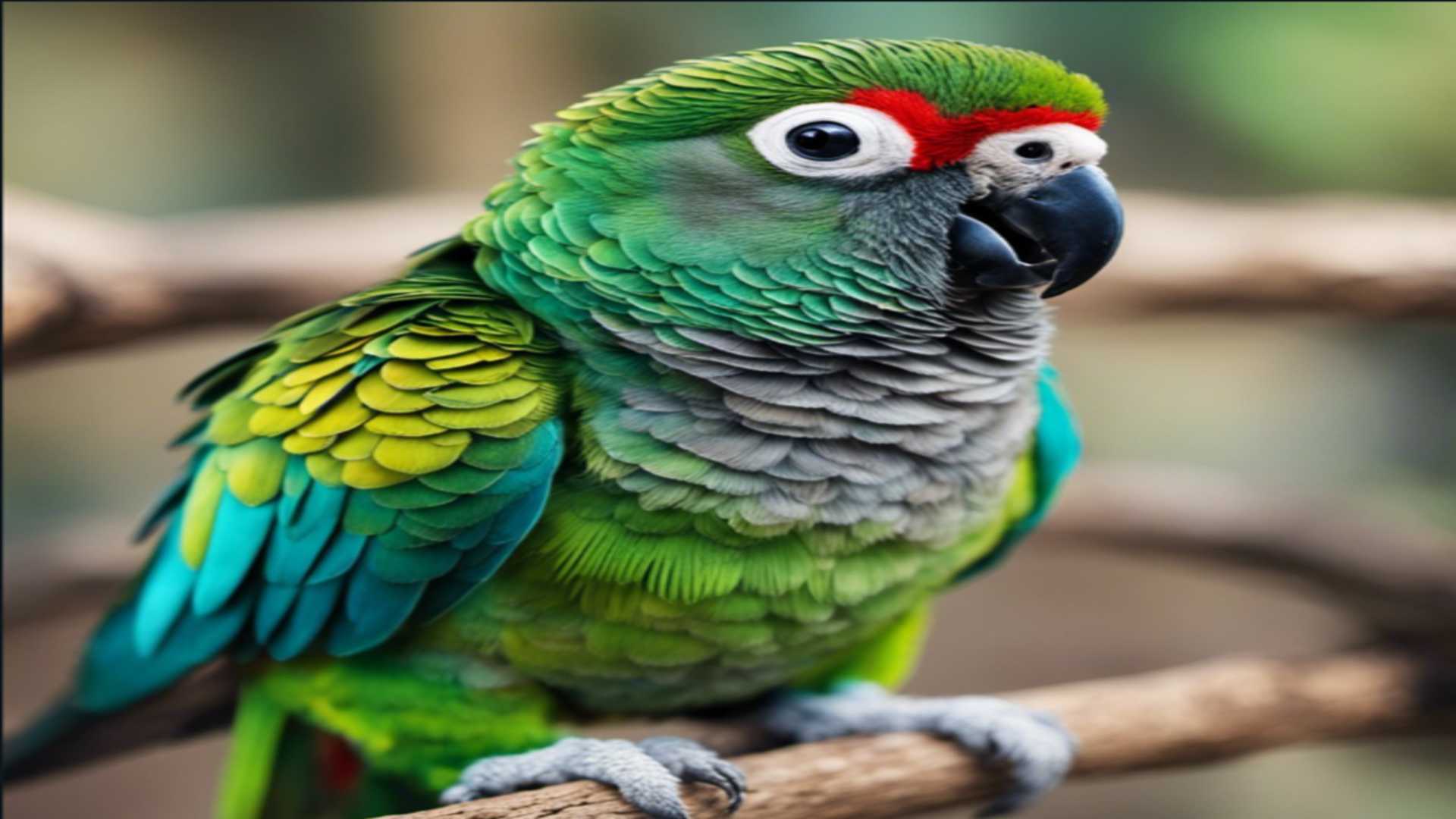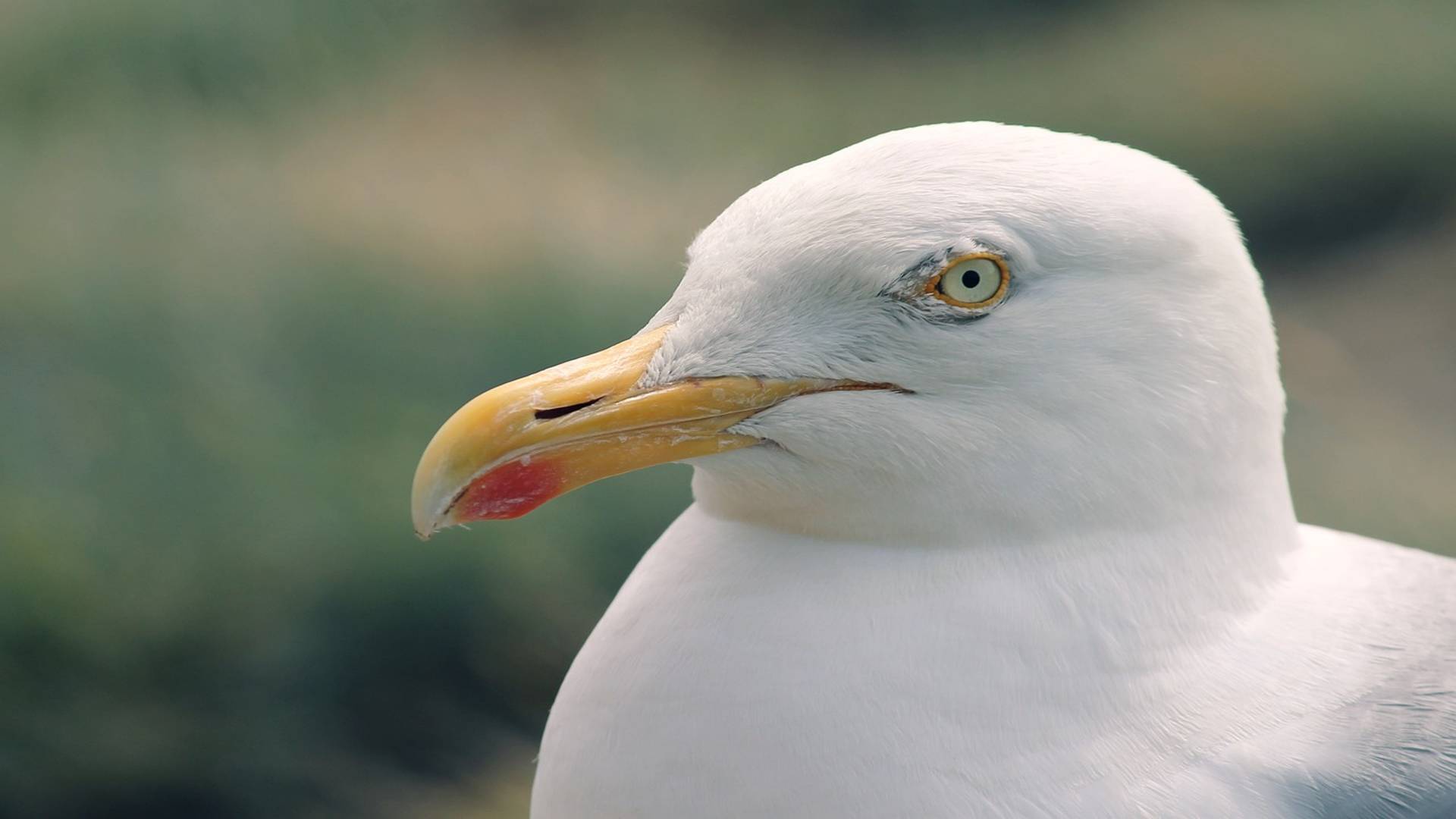There’s no doubt that cockatiels are one of the most popular pet birds. They’re known for their friendly nature, which makes them great companions. A friend of mine has recently bought a baby cockatiel and asked me a question since he knows that I have a blog. When do cockatiels learn to fly?
A cockatiel learns to fly at around four to five weeks old, and on average, cockatiels become skilled flyers at around 12 weeks. However, this will vary depending on the individual bird. Some cockatiels may take a little longer to become confident flyers, while others may start flying sooner.
Moreover, if you have the time to train your cockatiel to fly, you can start teaching it as this will lead to a faster learning process. The key is to start slowly and build up the bird’s confidence.
But there’s a lot more to cockatiel flight than just the age at which they start flying.
In this article, we will discuss some of the things that can influence when a cockatiel starts to fly and offer some tips on how you can help him along in his journey.
Let’s get started!
How to teach a baby cockatiel to fly?
There is no one-size-fits-all answer to this question, as the best way to teach a baby cockatiel to fly will vary depending on the individual bird’s personality and temperament. However, some tips on how to teach a baby cockatiel to fly include:
- Start by taking your bird outdoors for short periods, allowing it to get used to flying in open space.
- Once your bird is comfortable flying outdoors, start trying to get it to fly indoors by placing it on top of high furniture or in other open areas.
- Use a whistle or other noise to get its attention, then give it a gentle push to encourage it to start flying.
Rewards your bird with treats, praise, or cuddles whenever it takes a step in the right direction.
This is an important phase in your cockatiel’s development, and it will help build a strong bond between the two while also teaching your cockatiel how to fly.
Why is my cockatiel flying so much?
When considering why your cockatiel may be flying so much, it is important to evaluate the environment that they are in.
Cockatiels respond positively to an enriched environment. This means that they need plenty of stimulating activities during their day.
Consider providing toys such as swings, ladders, or ropes for your cockatiel to climb on or chew on throughout the day. This will also provide them with mental stimulation and a physical workout!
That said, it is important to understand that some cockatiels fly more than others due to their individual personalities. However, this variation should be carefully monitored since excessive flying can put an unreasonable strain on feathers and muscles.
If you ever feel like your bird might try excessive flying, consider consulting with an experienced avian professional immediately.
Do cockatiels come back if they fly away?
The short answer is yes. Cockatiels have been found to return after they fly away. Cockatiels are intelligent and loyal birds. They usually form strong bonds with their owners. Once an owner has tamed their cockatiel, the bird will often feel comfortable returning home when out of the cage.
However, there are still a few risks involved. Cockatiels can get scared easily and become confused if taken into unfamiliar territory.
If a cockatiel is lost in an unfamiliar area, it may take some time for them to find its way back, or even if they remember where they live, it could easily become lost again while attempting to return.
Also, if the bird finds a friendly person or potential new ‘owner,’ it may decide to stay with them instead of returning home.
To help prevent your cockatiel from flying away and getting lost, you should always keep them contained in a secure cage or aviary when outside its own home. You should also ensure that the windows in the house are securely closed and any gaps or escape routes are blocked off properly.
Furthermore, if you plan to let your cockatiel out of its cage, then make sure it is wearing a leg band identification so that someone else can easily identify who owns it if necessary.
Can you let a cockatiel fly around the house?
Many cockatiel owners wonder if they can let their pet birds fly around the house freely. As a general rule, you can let a cockatiel fly around the house as long as certain guidelines are followed.
The most important thing to consider before allowing any pet bird to fly freely is structural safety.
- Make sure that furniture and other items are placed away from walls, and also ensure that there are no open windows or large mirrors in areas where the cockatiel might crash into them.
- Secondly, ensure the area is free of potential dangers such as poisons and household cleaners.
- Thirdly, cockatiels may become attracted to cords angled just right (such as electric blankets), which can be dangerous if chewed through by a curious avian.
Be aware of this risk in particular when allowing your feathered friend to fly around your home, and take extra caution with cord protection products such as mesh chicken guards installed along your cords.
How fast can cockatiels fly?
Cockatiels can fly up to 40 miles an hour in the open air (not restricted by tight spaces). In short bursts, cockatiels can reach 55-60 miles an hour. When frightened or threatened in their natural environment, cockatiels may take off with a flight speed reaching 70 mph!
Cockatiels prefer to travel in flocks and have excellent eyesight, allowing them to find food sources and stay together as a group easily. A typical flock will stay in one area for just a few hours before moving on to another location or roosting site.
When flying alone or in pairs, cockatiels tend to stay within 10-15 feet of each other — anything further is too difficult without the aid of the flock arrangement used while moving between locations.
It is important to remember that although cockatiels love to fly, they should always be kept in a safe cage environment, especially indoors, where they can perch comfortably at night and avoid potential predators or accidents related to windows.
How far do cockatiels fly?
The average cockatiel can fly up to 30 miles per hour and cover a distance of up to 56 miles in a single day.
In the wild, cockatiels can fly long distances. They are known for their ability to fly non-stop for hours.
While pet cockatiels may not be able to fly as far as their wild counterparts, they can still cover a fair amount of ground when they take to the air.
Why do cockatiels fly backward?
As a general rule, cockatiels fly backward when they are startled or feel threatened. This is an instinct that helps them to escape predators and other dangers.
While it may seem like your cockatiel is flying backward on purpose, he must remember that this is an instinct and not something he can control.
That being said, one of the most common reasons is due to a wrong wing cut. When cockatiel’s wings are trimmed too short, this puts added pressure on the muscles, which can cause the bird to fly backward.
How can I get my cockatiel to fly to me?
If you want your cockatiel to fly to you, the best thing you can do is to build a bond of trust between the two of you. This can be done by spending time with your cockatiel daily, playing, talking to him, and offering him treats.
Once you have a good relationship with your cockatiel, you can start training him to fly to you. This can be done by holding out your arm and calling him over or by using a whistle or other noise to get his attention.
Note: Whenever your cockatiel flies to you, be sure to praise him and offer him a treat, as this will help to reinforce the behavior.
What are some of the dangers of cockatiel flight?
While cockatiel flight is a natural and important part of their development, there are some dangers that you should be aware of.
One of the most common dangers is that cockatiels can easily become startled and fly into walls or other objects.
Why do cockatiels fly into walls?
It’s a question that has puzzled experts for years – why do cockatiels fly into walls? According to Dr.Annerien De Villiers, a veterinarian who graduated from the University of South Africa, there are several possible explanations for this bizarre behavior.
One theory is that cockatiels misjudge the distance to the wall, thinking it is further away than it actually is. This could be due to poor eyesight or depth perception.
Cockatiels also have a relatively large head and body in proportion to their wingspan, which makes maneuvering in tight spaces more difficult.
Their flying speed may also be a factor, they can reach speeds of up to 40mph when flying straight, but when turning sharply, they need to slow down significantly. This can cause them to lose control and crash into walls or other objects.
Is it safe to let your cockatiel fly around your room?
It is safe to let your cockatiel fly around your room as long as you take some precautions to ensure his safety.
- Clear the room of potential hazards, such as open windows, sharp objects, or toxic plants.
- Place your cockatiel’s cage in a central location so he has plenty of space to fly around.
- If you have other pets, ensure they are not in the room while your cockatiel is flying, as this could scare him.
Also, since cockatiels are attracted to shiny objects, it’s a good idea to remove any jewelry or other items while he’s flying in the room.
Why does my cockatiel fly on my head?
Cockatiels often fly on their owner’s heads as a way of showing affection. This is because they see you as a trusted friend and feel safe when they are close to you.
It’s also important to note that cockatiels use their beaks for balance when flying, so you may feel a light pecking on your head as he lands. This is normal behavior and nothing to be concerned about.
Do cockatiels fly vertically?
Cockatiels can fly vertically, but they usually don’t unless they are trying to reach something high up.
Cockatiels are known for their ability to fly long distances as well as to fly vertically. This ability allows them to escape from predators or reach a high perch.
When cockatiels take off from the ground, they usually flutter up a few feet before flapping their wings. Once they are airborne, they will often fly in short bursts, flapping their wings rapidly to stay aloft.
However, they are not capable of sustained vertical flight. So, while cockatiels may occasionally fly vertically, it is not something that they can do for long periods.
Can cockatiels fly in the rain?
Cockatiels can fly in the rain. The oil on their feathers helps to waterproof them, making it easier for them to fly in wet conditions.
That being said, it’s important to note that cockatiels should not be out in the rain for extended periods as it can cause them to become cold.
Even though they have the physical ability to do so, their feathers do not provide much protection from heavy rain, and just like most other birds, they prefer to perch during wet weather.
Can cockatiels fly with clipped wings?
Cockatiels can fly with clipped wings. However, their flying ability can be compromised if their wings are clipped too short.
If you need to clip your cockatiel’s wings for safety reasons, it’s important to only clip a few feathers from the tips of their wings.
This is a very delicate procedure, and it’s best to have a professional avian veterinarian do it for you. In fact, their winds have blood vessels running through them, and if these are cut, they can cause serious injury and prevent them from flying altogether.
Clipping your cockatiel’s wings will not hurt them, but it will make it harder for them to sustain flight if they try to fly too high or too far.
So, if you do need to clip their wings, be sure only to clip a few feathers and make sure that their wings are still able to support them in flight.
How far can a cockatiel fly with clipped wings?
The distance a cockatiel with clipped wings can fly is limited. If the wings are fully or partially clipped, a cockatiel will not be able to fly more than a few feet and will only be able to maneuver close to the ground.
It is important to remember that flying, even for small distances, is an important exercise for birds and can help maintain healthy bones and muscles.
When you clip a bird’s wings, you are essentially taking away its ability to exercise, making it more prone to developing health issues such as obesity or weak bones in the long run.
How far can a cockatiel fly in one day?
Cockatiels are capable of flying long distances in one day. They have a wide range of flight capabilities, but on average, they can cover a distance of up to 30 miles in a single day. This is impressive, considering the small size of these birds.
For pets kept indoors, such as those living in cages or aviaries with limited outdoor access, it is unlikely that they will ever be able to cover the exact distances as wild cockatiels because they don’t get as much exercise as their free-roaming counterparts do.
However, many pet owners provide special perches outside their cages that allow their cockatiels to stretch their wings while staying close by and safe from predators.
Can cockatiels fly at night?
Cockatiels can fly at night, but they are not active flyers during this time. In the wild, cockatiels will roost in trees at night to avoid predators. They will only fly if they are disturbed or if they need to relocate to a new roosting spot.
Though all birds have the ability to fly, not all birds are built for flying at night. Cockatiels are one type of bird that is not well-suited for nighttime flights. To see while flying at night, birds rely on lateralization, which allows them to perceive depth and distance.
Birds that are good at flying at night have eyes that are located in front of their heads, such as owls, giving them a wide field of view. Cockatiels, however, have eyes on the side of their heads, which limits their ability to perceive depth and distance.
As a result, cockatiels are not able to fly safely at night. Though they may be able to take off and stay in the air for brief periods of time, they will eventually crash into something if they cannot see where they are going. For this reason, it is best to keep cockatiels indoors at night.
Summary
Before we move on to the conclusion, we’ve summarized this article into a short list of key points for you to remember:
- Can learn to fly at 4-5 weeks old and become skilled flyers at around 12 weeks.
- Training can help them to learn faster.
- Can fly backward if startled or feeling threatened due to wrong wing cut or as a natural instinct.
- They can be trained to fly to you by building trust and offering rewards for good behavior.
- They need to be aware of the possible dangers posed by their flight, such as flying into walls or other objects.
Wrapping up
In this article, we learned about when cockatiels learn to fly, how far they can fly, and whether or not they can fly at night. They are not able to fly away, and they can only fly for a short period of time if their wings are clipped.
We also learned that they could be trained to fly to their owner and fly long distances in the wild.
If you have a pet cockatiel, it’s important to make sure that its wings are clipped properly so that they can still fly safely, and at the same time, you’re going to reduce the likelihood of losing your bird if it flies away.
Want to learn more about cockatiels?
Ready to boost your knowledge about cockatiels to the next level? Check out the articles below:
- Why Do Cockatiels Sit On Infertile Eggs?
- What Cockatiels are Afraid of?
- Why is My Cockatiel Chirping Nonstop?






